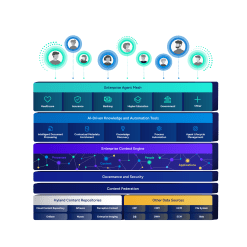The shift to modern cloud content management
Acknowledging legacy ECM pain points
Organizations maintaining legacy ECM systems often struggle with several interconnected challenges that compound over time. These aging platforms create significant operational friction that extends far beyond IT departments.
Aging infrastructure limitations: Many traditional ECM platforms retain their original monolithic architecture from the early 2000s. This design creates bottlenecks in functionality, makes integration with modern business systems complex and expensive, and requires lengthy development cycles for even basic customizations.
Cloud-readiness gaps: While some legacy vendors eventually offered cloud options, these solutions often lack the full functionality and performance of true cloud-native architectures. Organizations need content management that provides anytime, anywhere access while maintaining enterprise-grade security and compliance standards.
Information sprawl: Despite promises of unified content storage, enterprise content is scored across 21 systems on average, according to Forrester. This fragmentation makes it nearly impossible to gain comprehensive insights from enterprise data or create efficient, automated workflows across departments.
Limited innovation capacity: Legacy vendors often focus resources on maintaining aging infrastructure rather than developing new capabilities. This leaves organizations without access to transformative technologies like AI-powered content intelligence, advanced automation and modern integration frameworks.

















